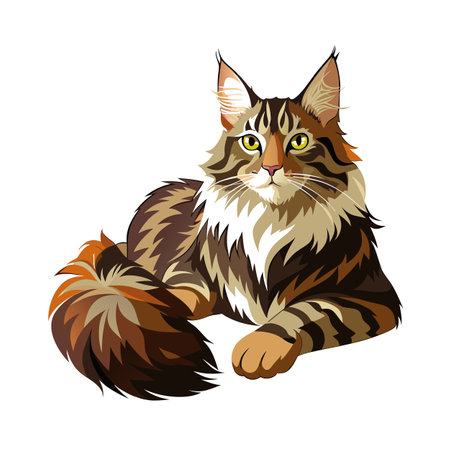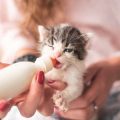1. Introduction: The Outdoor Cat in Britain
Cats have long held a cherished place in British society, symbolising both companionship and independence. From the bustling streets of London to the tranquil countryside villages, cats are often seen weaving their way through gardens, fields, and alleyways. Unlike some countries where indoor-only lifestyles are preferred for feline friends, Britain maintains a strong tradition of allowing cats the freedom to roam outdoors. This custom is deeply rooted in history, influenced by the role cats have played in controlling rodents and serving as beloved household members. As a result, the image of a cat exploring its neighbourhood is not only common but also celebrated across the UK. However, this practice brings with it unique challenges and interactions with local wildlife, shaping the daily experiences and wellbeing of outdoor cats. In this article, we’ll explore how these encounters affect both our feline companions and the broader ecosystem, offering insight from a distinctly British perspective.
2. Native British Wildlife: Who Shares the Urban and Rural Spaces
Across the towns, villages, and countryside of Britain, a fascinating variety of native wildlife coexists with our beloved outdoor cats. Understanding these neighbours is essential for every cat owner who wishes to promote safe and positive interactions between their pet and the local environment. Let’s take a closer look at some of the most prominent species that frequently encounter outdoor cats in both urban and rural settings.
The Main Players in UK Wildlife
| Species | Common Habitats | Interaction with Cats |
|---|---|---|
| Hedgehogs | Gardens, parks, hedgerows | Curious encounters; sometimes share food sources or shelter spots. Cats usually observe but rarely harm adult hedgehogs due to their spines. |
| Birds (e.g., robins, blackbirds, sparrows) | Trees, shrubs, gardens, open spaces | Cats may stalk or hunt small birds, especially fledglings or ground feeders. This can impact bird populations if not managed responsibly. |
| Foxes | Urban alleys, woodlands, suburban gardens | Generally avoid direct confrontation with cats; occasional disputes over territory or food scraps may occur, but serious conflicts are rare. |
| Badgers | Woodlands, fields, large gardens near countryside | Mostly nocturnal and shy; limited interaction with cats. Badgers are more likely to ignore cats unless provoked. |
Lesser-Known Wildlife Neighbours
Apart from these well-known species, outdoor cats might also encounter creatures such as squirrels, frogs, shrews, and voles. Each species adds its own dynamic to the shared space and can present unique opportunities or challenges for cats exploring outside.
Cultural Significance in British Life
The presence of these wild neighbours has deep roots in British culture—from hedgehogs in children’s stories to foxes in urban folklore. Recognising and respecting this rich tapestry helps cat owners appreciate how their pets fit into the wider natural community. By being mindful of these interactions, we support not just our cats’ wellbeing but also the health of local wildlife across the UK.

3. Wildlife Challenges: Risks and Dangers for Outdoor Cats
Allowing your cat to roam outdoors in the UK can expose them to a range of wildlife-related risks. British gardens and countryside are teeming with creatures, some of which may pose direct or indirect threats to our feline friends. Understanding these dangers is vital for any responsible cat owner who wishes to keep their pet safe while letting them enjoy the great outdoors.
Injuries from Wildlife Encounters
One of the primary concerns for outdoor cats is physical injury resulting from interactions with local fauna. Foxes, which are widespread even in urban areas, may view cats as competitors or, in rare cases, prey. Hedgehogs, though generally docile, can cause puncture wounds if a curious cat gets too close. Birds such as magpies and crows may aggressively defend their nests by swooping at passing cats, leading to scratches or peck injuries. Even smaller creatures like rodents can bite when cornered.
Disease Transmission
Wildlife can also be carriers of diseases that are transmissible to cats. For instance, rodents often harbour fleas and ticks, both of which can transfer pathogens causing illnesses such as Lyme disease or tapeworm infestations. Additionally, foxes and badgers may carry parasites like mange mites or worms that could infect an inquisitive cat. Rabies is not present in Britain, but other zoonotic diseases remain a risk.
Territorial Disputes and Stress
Cats are territorial animals by nature, and encounters with other wildlife can lead to stressful confrontations. Foxes and feral cats may challenge domestic pets for territory, leading to fights that result in bites or scratches. These altercations not only cause physical harm but can also increase stress levels in your cat, affecting their overall wellbeing. It’s important to recognise signs of anxiety or aggression after wildlife encounters and seek veterinary advice if needed.
4. Outdoor Cats as Predators: Impact on Local Wildlife
Cats are natural hunters, and when allowed outdoors in Britain, they often act on their instincts. This behaviour can have a significant impact on local wildlife, particularly bird and small mammal populations. British gardens, parks, and countryside areas are home to a diverse range of species, many of which are vulnerable to predation by domestic cats.
The Hunting Habits of Outdoor Cats
Outdoor cats in the UK typically hunt a variety of prey, including birds, mice, voles, shrews, and even young rabbits. While some cats may only bring home a few animals each year, others can catch dozens or even hundreds. The following table highlights common prey species and their vulnerability:
| Prey Species | Typical Habitat | Vulnerability Level |
|---|---|---|
| House Sparrow | Urban gardens, hedgerows | High (declining population) |
| European Robin | Woodlands, parks | Moderate |
| Field Vole | Grasslands, meadows | High |
| Common Shrew | Borders, woodlands | Moderate |
| Dunnock (Hedge Sparrow) | Shrubby areas, gardens | High (declining population) |
| Pygmy Shrew | Moist habitats, undergrowth | Moderate |
Ecological Implications of Cat Predation in Britain
The cumulative effect of millions of pet cats hunting across the UK can be substantial. According to studies by organisations such as the RSPB and the Mammal Society, domestic cats kill an estimated 27 million birds and 200 million mammals annually in Britain. While not all kills significantly impact populations—especially for common species—there is concern for those already facing declines due to habitat loss or other pressures.
Potential Consequences:
- Biodiversity Loss: Native songbirds like house sparrows and dunnocks are particularly at risk where cat densities are high.
- Ecosystem Imbalance: Reduction in small mammal numbers can affect predators higher up the food chain, such as owls and stoats.
- Disruption of Breeding Success: Birds disturbed or preyed upon during nesting season may fail to raise chicks successfully.
- Cumulative Local Effects: In urban and suburban areas with dense cat populations, even common species can face localised declines.
Towards Responsible Pet Ownership
The British public values both its wildlife heritage and its feline companions. By understanding the ecological implications of allowing cats to roam freely, owners can make informed choices to minimise negative impacts. Measures such as fitting cats with bells or keeping them indoors during peak bird activity hours are increasingly recommended by conservation groups.
5. Public Attitudes and Legal Considerations
Understanding how British society navigates the relationship between outdoor cats and local wildlife is vital for anyone caring for cats or interested in conservation. In the UK, cats are cherished household companions, yet there is growing public awareness about their impact on native species such as songbirds and small mammals. Many people take a pragmatic approach, recognising that while cats have a natural hunting instinct, their actions can affect vulnerable wildlife populations. This has led to lively debates in communities, with some advocating for responsible pet ownership—such as keeping cats indoors at night or fitting them with collars containing bells—to help reduce predation.
From a legal standpoint, cats in Britain are classified as ‘free roaming’ animals, meaning they are not required by law to be contained within an owner’s property. Unlike dogs, they do not need to be kept on a lead or restricted from wandering. However, there are still legal frameworks addressing animal welfare, such as the Animal Welfare Act 2006, which obliges owners to meet the needs of their pets and prevent suffering. When it comes to wildlife conservation, legislation like the Wildlife and Countryside Act 1981 protects certain species and habitats. Although this act does not directly regulate domestic cats, it does highlight the importance of biodiversity and protecting native fauna.
In recent years, conservation organisations and local councils have started working together to educate cat owners about their pets’ potential impact on wildlife. Campaigns encourage practices such as microchipping, neutering, and even creating ‘catios’—enclosed outdoor spaces that allow cats fresh air without enabling them to hunt freely. The aim is to strike a balance: respecting the welfare and natural behaviours of cats while safeguarding Britain’s treasured wildlife. Ultimately, both societal attitudes and legal considerations continue to evolve as more research sheds light on the complex interactions between outdoor cats and the environment.
6. Guidance for Cat Owners: Coexisting with British Wildlife
Living in the UK provides cat owners with a unique opportunity to enjoy both their feline companions and the rich diversity of local wildlife. However, this privilege comes with responsibility. Here are some practical tips and responsible behaviours for reducing your cat’s impact on native species while also ensuring their safety outdoors:
Encourage Safe Outdoor Exploration
Consider fitting your cat with a quick-release collar and a bell. The bell alerts birds and small mammals to your cat’s presence, giving them a better chance to escape. If possible, supervise outdoor time or create a secure ‘catio’ (cat patio) or enclosed garden space, allowing your cat to experience the outdoors without becoming a threat to wildlife.
Time Outdoor Adventures Wisely
Many vulnerable species are most active at dawn and dusk. Restricting your cat’s outdoor access during these times can significantly reduce their chances of hunting birds and small mammals. Letting your cat outside during midday hours helps protect both wildlife and your pet from nocturnal predators like foxes or badgers.
Provide Enrichment Indoors
Cats hunt not only for food but also for stimulation. Offering toys, puzzle feeders, climbing trees, and regular play sessions indoors can help satisfy their natural instincts. A well-stimulated indoor cat is less likely to roam far or hunt when outdoors.
Support Local Wildlife Habitats
Maintain bird feeders out of cats’ reach and provide dense shrubbery where small animals can hide. Avoid using chemicals in your garden that could harm either wildlife or your pet. Engaging with local conservation groups or following advice from the RSPB (Royal Society for the Protection of Birds) will further ensure you are supporting biodiversity in your area.
Regular Health Checks and Preventative Care
Keep your cat’s vaccinations up to date and use appropriate flea and worm treatments. This not only protects your pet but also prevents the spread of disease among wildlife populations.
By adopting these responsible practices, British cat owners can enjoy the companionship of their pets while actively contributing to the protection of our precious local wildlife. Together, we can foster an environment where both cats and native species thrive side by side.


